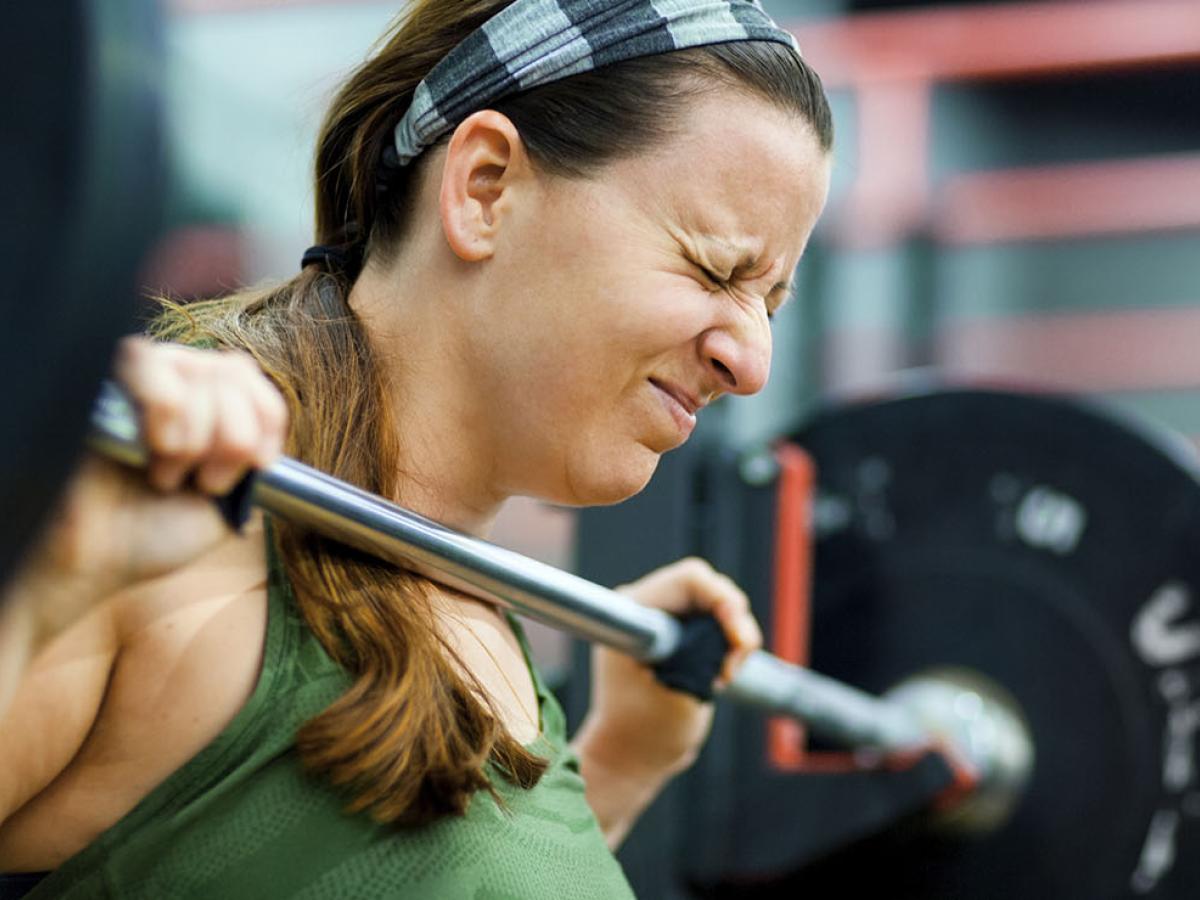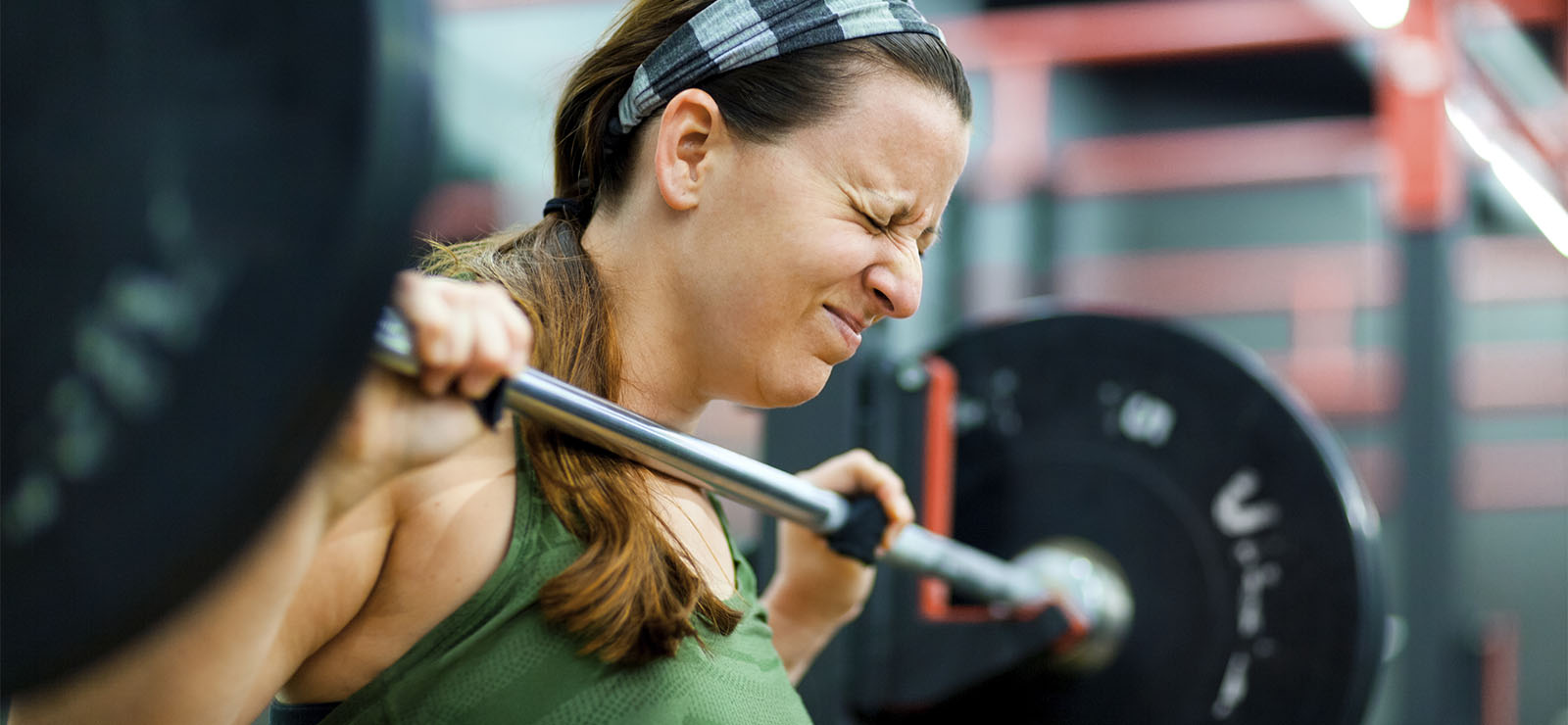January 22, 2025

There’s nothing more exciting than feeling motivated to get in shape. You’ve identified your goals. You have a workout plan. And after your first workout, you feel terrific. This isn’t so bad, you think. Why have I been putting this off for so long?
Fast forward to the following day when it hits you like a ton of bricks. Everything hurts. The stairs are torture and lifting your arms to blow dry your hair is excruciating.

“Good intentions can quickly die in the face of muscle soreness,” says Dr. Brian Toedebusch, an MU Health Care sports medicine doctor with a background in exercise science. “Any time you work your muscles in new ways, you’ll inevitably feel sore. But if you let muscle soreness keep you from sticking to your plan, you may feel a little deflated.”
The good news is that muscle soreness, also known as delayed onset muscle soreness (DOMS), doesn’t have to be severe or debilitating. It also doesn’t have to keep you from achieving your exercise goals.
Dr. Toedebusch shares six facts about muscle soreness to guide you through the first few weeks of a new workout.
1. Delayed Onset Muscle Soreness Is a Sign of Muscle Damage
Many people attribute muscle soreness to built-up lactic acid in their muscles, but Dr. Toedebusch says that’s just an old wives’ tale.
“DOMS is part of your muscle’s repair and recovery process,” he says. “When you use your muscle, microscopic tears occur. Your body recovers from the damage and becomes stronger as a result. Soreness is a symptom you develop during that damage and recovery process.”
Sore muscles are a sign that your muscles have been stimulated. But managing the degree of soreness is critical when you’re working toward a fitness goal.
2. Some Exercises Will Make You More Sore Than Others
Soreness is the result of muscle use. If a new workout challenges your muscles differently, you’ll be more sore than if you go for a casual walk — your muscles are accustomed to walking. (But you can expect to be sore if you suddenly power walk or walk up and down hills.)
Additionally, exercises that lengthen your muscles (eccentric contractions) will cause more soreness than those that shorten muscles (concentric contractions). For example, you shorten your bicep (upper arm) muscle when you curl a dumbbell. As you lower the weight, you lengthen your bicep. The lengthening (eccentric) movement causes more damage to the muscle. The more slowly you perform that part of the movement, the more intense the exercise.
In the same way, walking or running downhill or on a decline lengthens muscles and causes more soreness than walking on a flat surface. Incline walking or running involves concentric (shortening) contractions — though you’ll still feel sore afterward if you engage muscles that don’t often get used.
“When starting out, try to minimize the lengthening, or eccentric, part of the exercise, because it will cause the most soreness,” Dr. Toedebusch says. “Once you get past the beginning phase, incorporate more eccentric work and you’ll see more strength gains in the long term.”
3. Sore Muscles After a Workout Should Not Last More Than Three Days
It’s natural to feel sore after stimulating your muscles. But you should still be able to move freely. If you are in severe pain — meaning you cannot move your limbs comfortably or participate in daily activities — you likely overdid it with your workout.
Soreness, even when it's severe, should subside after one to three days.
“If your soreness lasts longer than five days, it’s concerning,” Dr. Toedebusch says. “There may be more than soreness — you could be injured.”
4. You Can Take Steps Before, During and After Your Workout to Reduce Muscle Soreness
Your approach to working out is critical to minimizing soreness, especially if you are new to exercise.
“If your workout is too intense and far above your current fitness level, you are more likely to be severely sore,” Dr. Toedebusch says. “Instead, start at a low to moderate exercise level and gradually build the intensity.”
He also recommends:
- Hydrating before, during and after exercise: Plain water is all you need, and it will significantly reduce soreness.
- Warming up: Taking a few minutes to warm up your muscles before a workout reduces the damage and minimizes post-workout soreness.
- Stretching after your workout: Stretching when your muscles aren’t warmed up may traumatize the muscles and do more harm than good.
- Reducing inflammation: After each of your first few workouts, take anti-inflammatory medicine and ice your muscles.
- Gently massaging and stretching sore muscles: Use your fingers to gently massage sore muscles. Avoid using a massage gun, which can traumatize the muscles further. Light stretching can also help.
5. Resuming Your Workout Plan Is the Best Thing for Sore Muscles
Exercising may be the last thing you feel like doing when you’re sore. But resuming exercise after a day of rest is often the best way to get past the soreness phase.
“As soon as you get into a routine, the soreness response will gradually decrease over time,” Dr. Toedebusch says. “You might feel sore after every workout during your first week, but the more frequently you exercise, the less soreness you’ll develop over time.”
If you don’t trust yourself to stick to your exercise plan once soreness sets in, set yourself up for success:
- Define realistic goals: Trying to exercise at high intensity, five days a week can feel overwhelming if you are sore after day one. Start small.
- Find a partner: Choose someone at the same exercise level.
- Keep your eye on the prize: Remember what you’re trying to achieve in the long term. Write your goal or a motivational quote somewhere that you’ll see daily.
6. Muscle Pain During Exercise Is Not the Same Thing as Soreness
Soreness and pain are two very different things. Recognizing the signs of overtraining, an injury or a more severe condition is critical to getting the treatment you need.
Consult your doctor if you experience:
- Dramatic change in your strength: Significant and sudden weakness could be the symptom of an underlying issue.
- Severe muscle cramps with exercise: Severe muscle cramps with exercise could be a sign of a condition called rhabdomyolysis. This is a serious condition that can eventually affect your kidneys. Severe pain while exercising and dark, bloody urine are two common symptoms.
- Trouble with weight bearing: If it hurts to put body weight on any joint or limb, you might be injured.
“The goal of exercising is to improve your health without experiencing injury or severe soreness,” Dr. Toedebusch says. “Soreness is inevitable, but when you approach exercise in a smart way, it’s absolutely manageable.”
Next Steps and Useful Resources
- Want to discuss more with a sports medicine doctor? Find one today.


